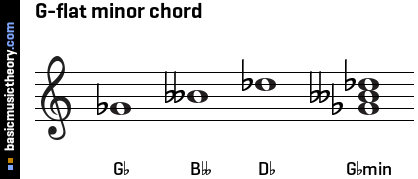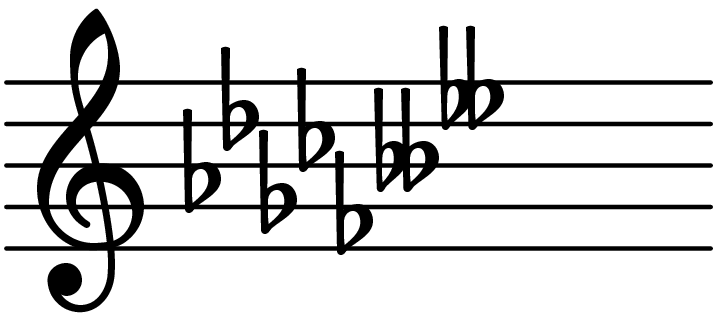
In a charity interview he explained several of the reasons that drew him to this key. John Rutter has chosen G-flat major for a number of his compositions, including "Mary's Lullaby" and "What sweeter music". The Flohwalzer can be played in G-flat major, or F-sharp major, for its easy fingering. French composer Claude Debussy used this key for one of his most popular compositions, La fille aux cheveux de lin, the eighth prélude from his Préludes, Book I (1909–1910). Polish composer Frédéric Chopin wrote two études in the key of G-flat major: Étude Op. Austrian composer Franz Schubert chose this key for his third impromptu from his first collection of impromptus (1827). In particular, the black keys G ♭, A ♭, B ♭, D ♭, and E ♭ correspond to the 5 notes of the G-flat pentatonic scale. This key is more often found in piano music, as the use of all five black keys allows an easier conformity to the player's hands, despite the numerous flats.

Mahler's Tenth Symphony was composed in the enharmonic key of F-sharp major. Examples include: the choral entry during the finale of his Second Symphony, during the first movement of his Third Symphony, the modulatory section of the Adagietto from his Fifth Symphony, and during the Rondo–Finale of his Seventh Symphony. Gustav Mahler was fond of using G-flat major in key passages of his symphonies. 7 in G-flat major, while its middle section is in the parallel key (F-sharp minor, enharmonic equivalent to the theoretical G-flat minor). Muzio Clementi chose F-sharp in his set for the prelude, but G-flat for the final "Grande Exercice" which modulates through all the keys.Īntonín Dvořák composed Humoresque No. When writing works in all 24 major and minor keys, Alkan, Rachmaninoff, Scriabin, Shchedrin and Winding used G-flat major over F-sharp major.

As well as it is used in Ravel's famous " Gaspard de la nuit", in the movement, "Le Gibet".Ī striking use of G-flat major can be found in the love duet "Tu l'as dit" that concludes the fourth act of Giacomo Meyerbeer's opera Les Huguenots. It is the predominant key of Maurice Ravel's Introduction and Allegro for harp, flute, clarinet and string quartet. It is more often used as a main key for piano works, such as the impromptus of Chopin and Schubert.

Like F-sharp major, G-flat major is rarely chosen as the main key for orchestral works.


 0 kommentar(er)
0 kommentar(er)
